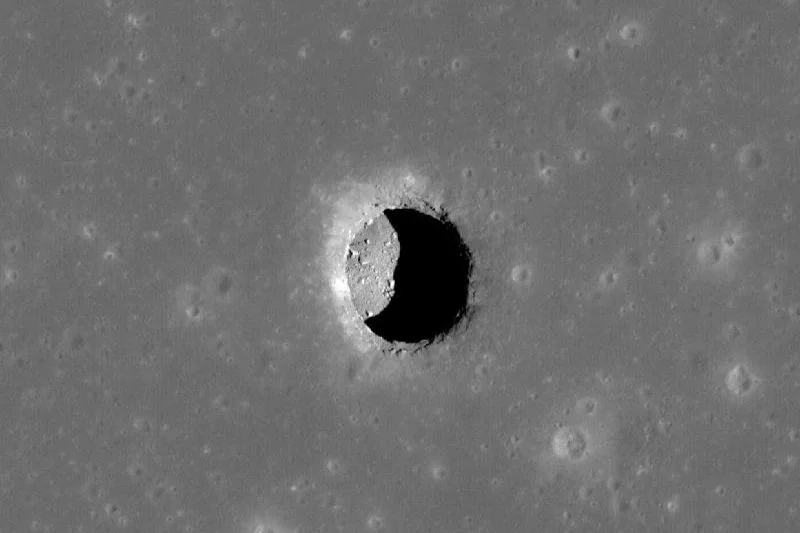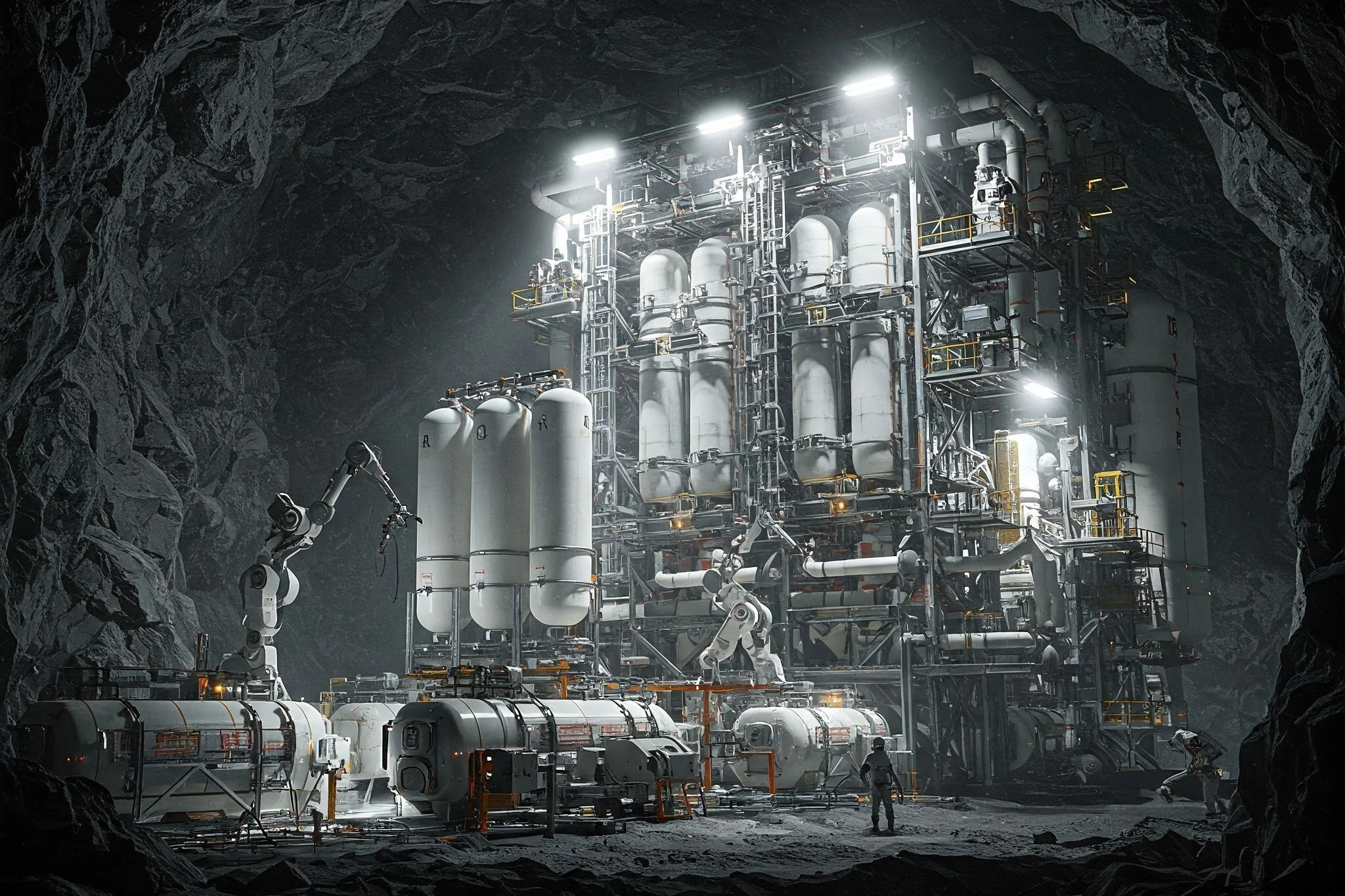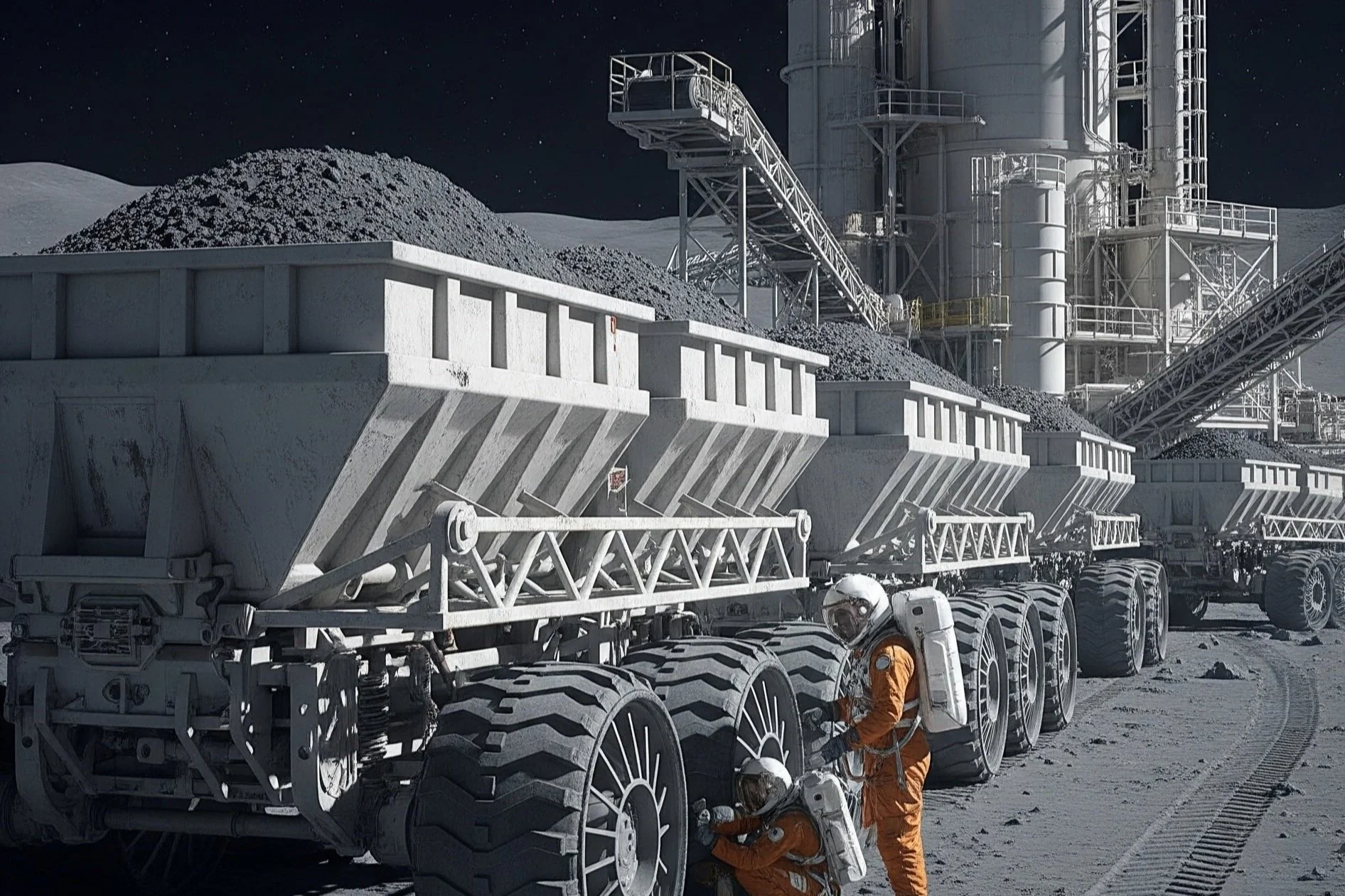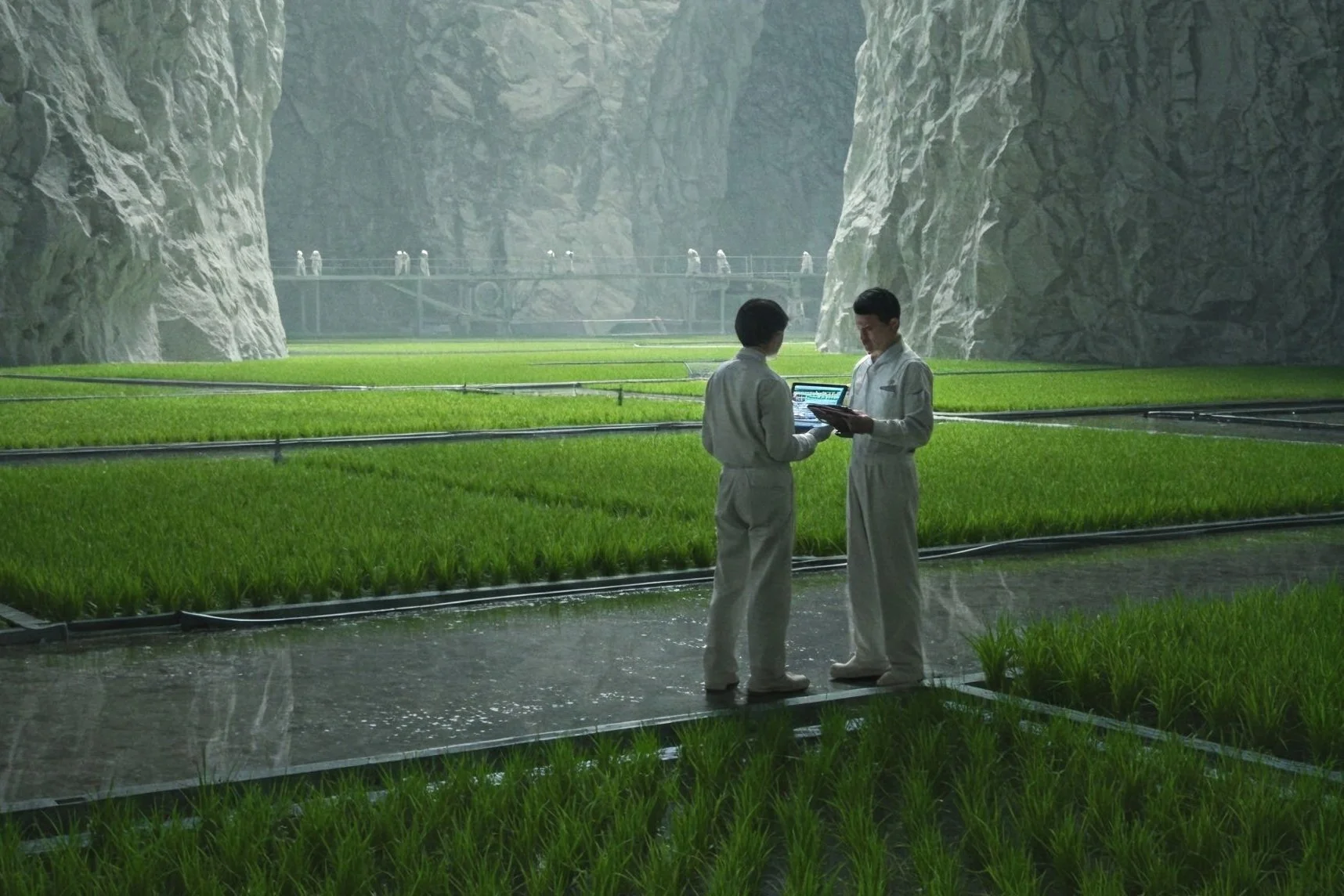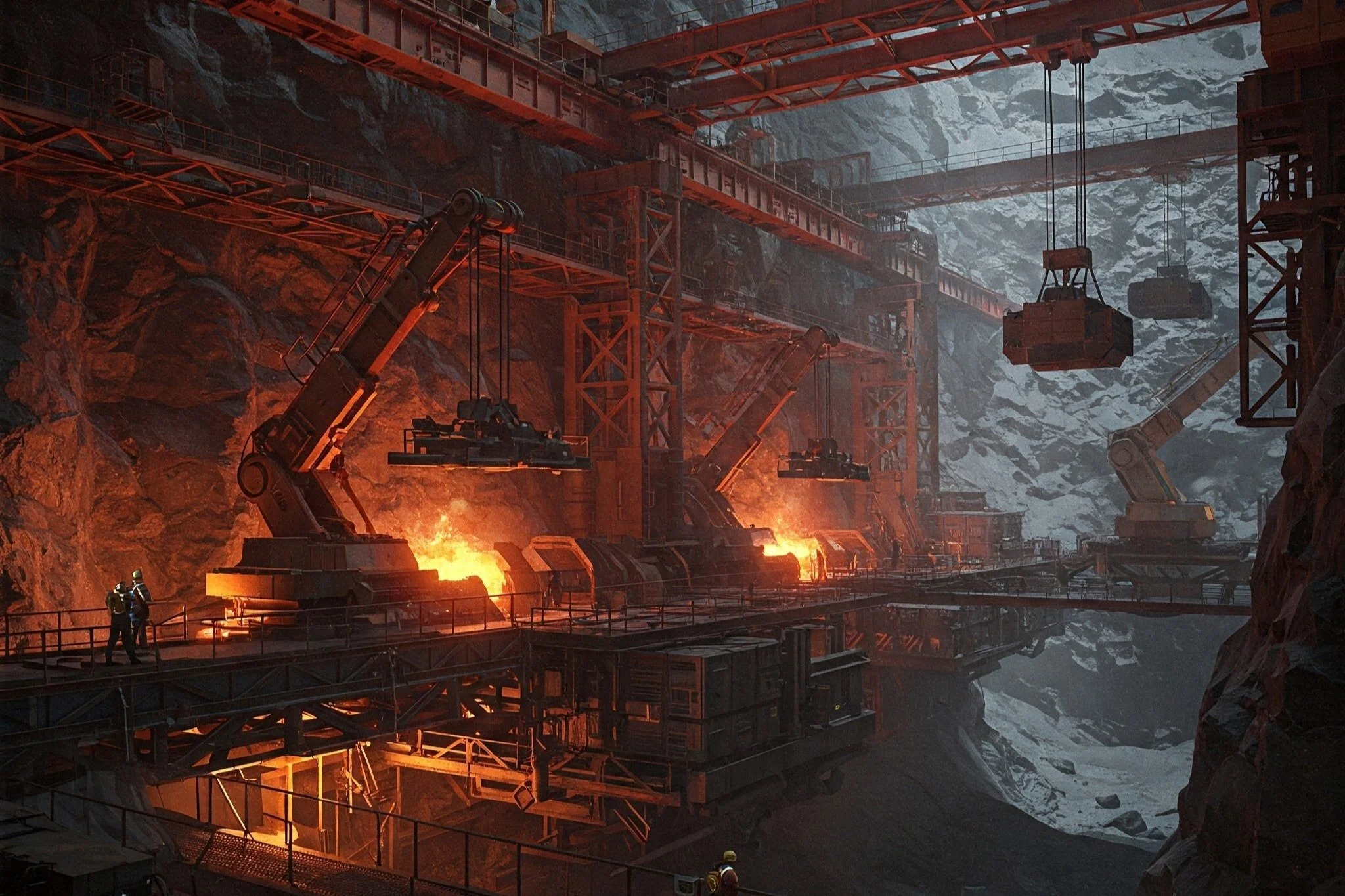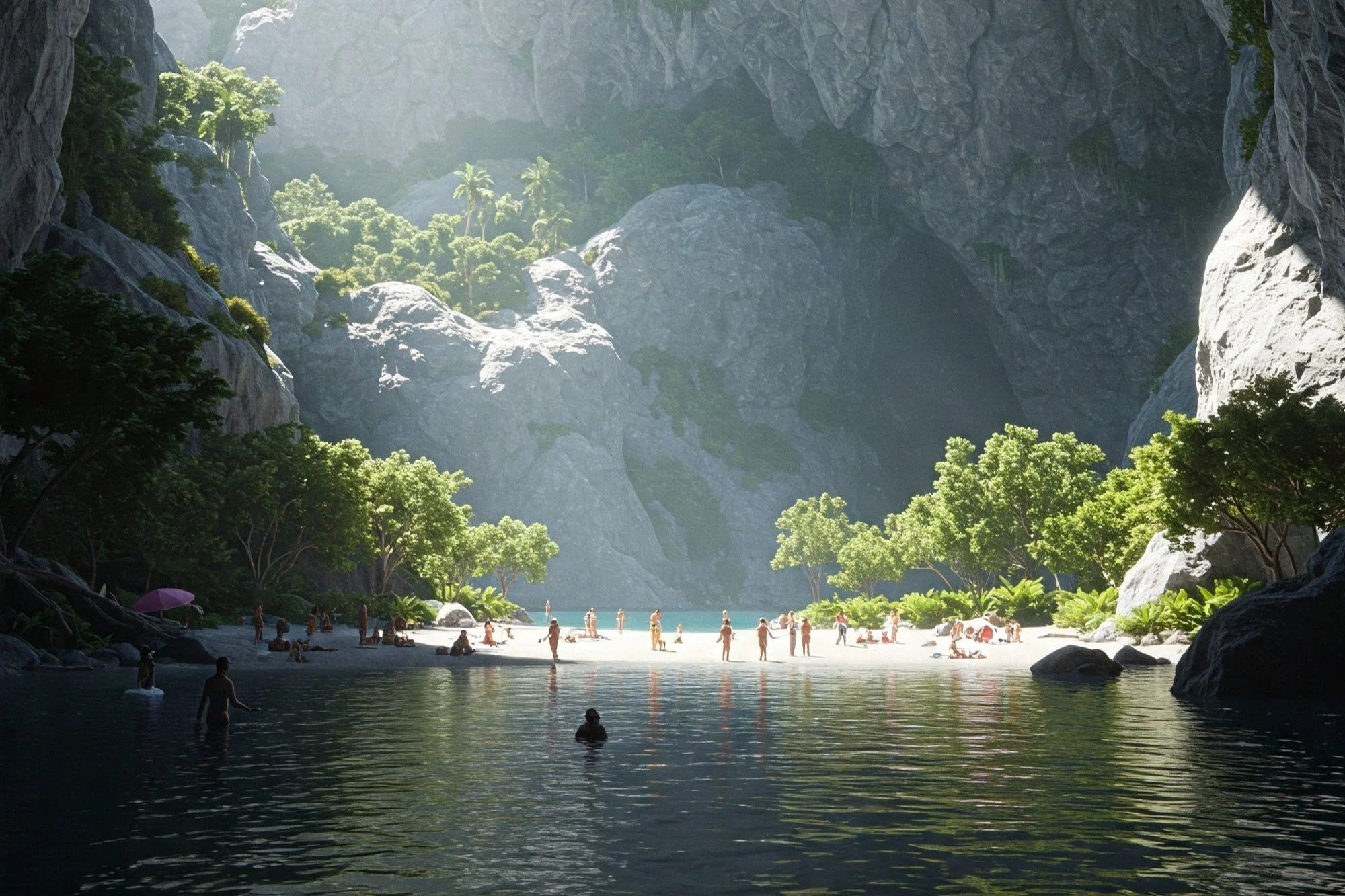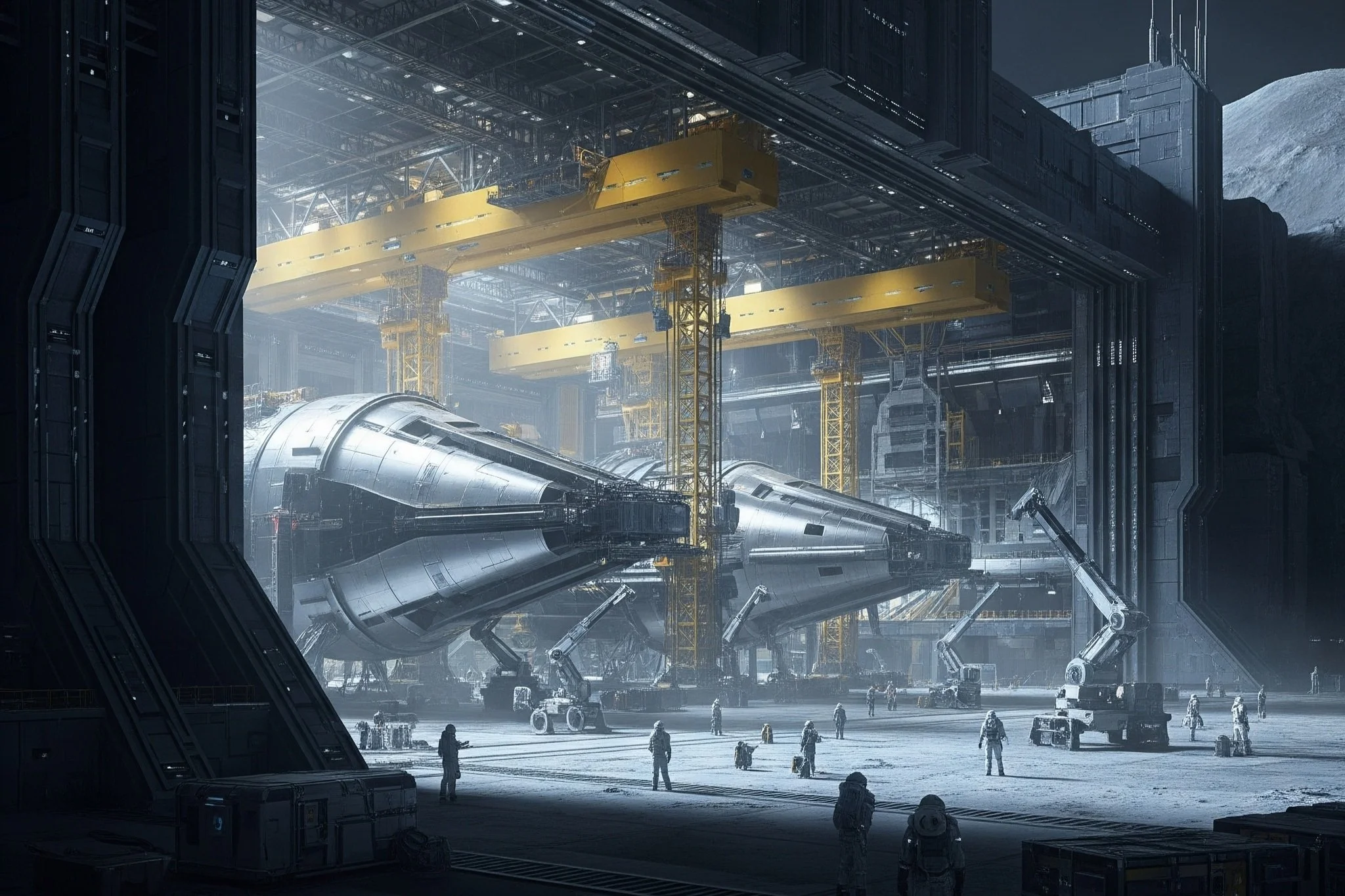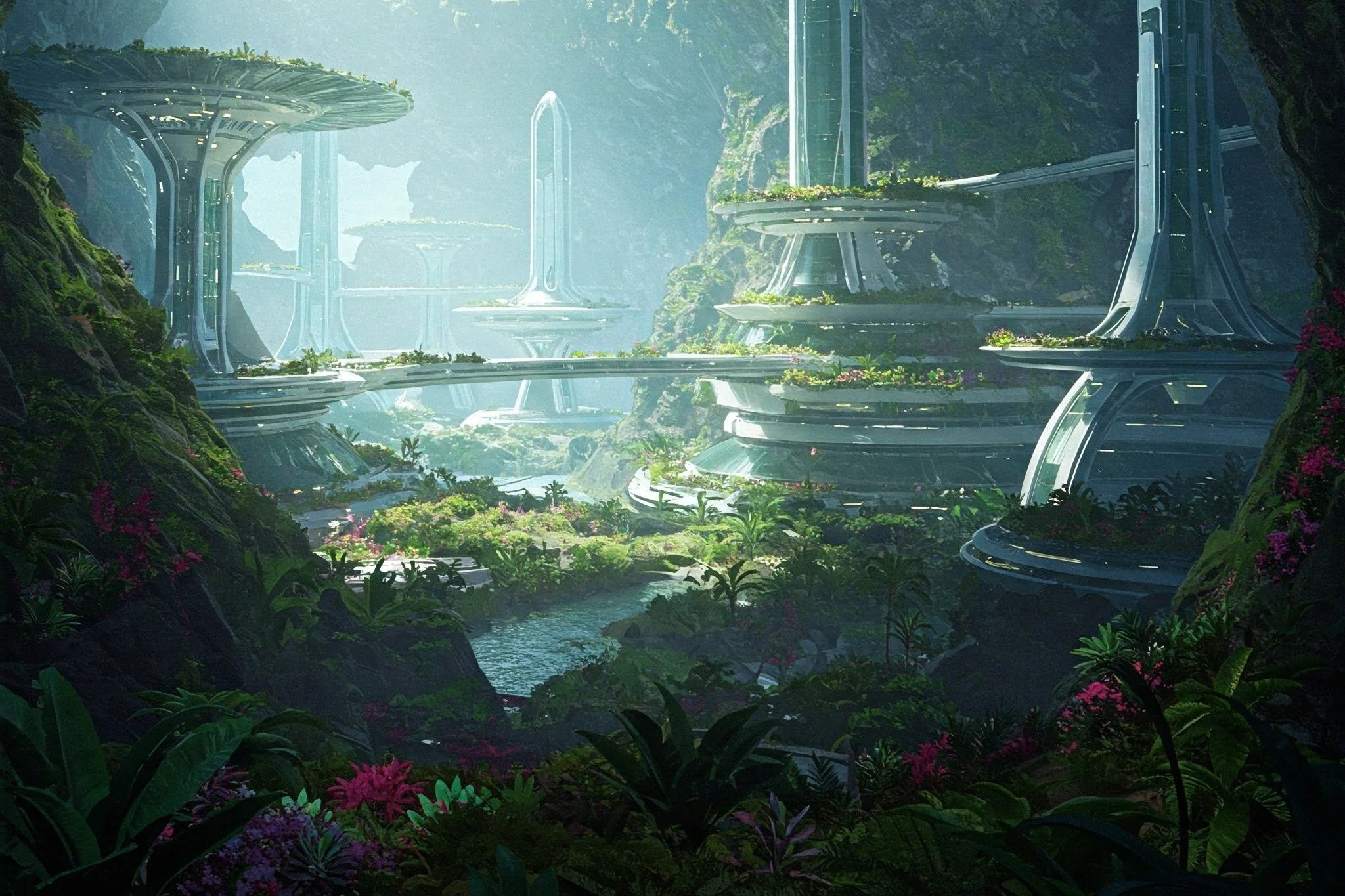LUNAnomics concept art series showcasing the exciting possibilities the Moon has for exploration, human expression and economic development.
Civilization— The full potential of establishing a new society on the Moon.
A century prior, a group known as the "Lunar Optimists" made the radical decision to permanently settle on the Moon— a significant shift from the temporary six-month rotations of science teams, industrial crews, and hotel staff.
Leveraging the growing industrial capability on the Moon— particularly the surpluses of oxygen from regolith processing, and inspired by the prospect of self-governance, the Lunar Optimists dedicated themselves to pressurizing and transforming a vast network of lunar lava tubes into habitable spaces. Join the conversation >>
The Mare Tranquillitatis pit— is a lunar “skylight” in the Mare Tranquillitatis, roughly 400 kilometers away from the Apollo 11 landing site. The ~100 diameter wide, ~105 meters deep pit is a collapsed section of a lunar lava tube. Over 200 skylights have been found across the lunar surface ranging from a few meters to over 900 meters. These skylights offer a glimpse of the vast possibility that exists below the lunar surface.
Image: NASA Lunar Reconnaissance Orbiter Camera
Year One— Members of the Lunar Optimists establish a temporary basecamp at the mouth of an extensive lava tube network. Previous exploration of this complex have uncovered spaces over a kilometer wide and many in length. Protected from radiation, micrometeoroids, and temperature swings, their next objective is to seal several of the smaller caverns at strategic choke points so a breathable environment can be created. Join the conversation >>
In-Situ Resource Utilization— A CNC operator supervises the milling of a block of aluminum derived from lunar regolith. This production facility was delivered to the Moon by a heavy lander and then covered with regolith to protect occupants from cosmic radiation. Production facilities such as this focus on simple, high-mass components, while advanced parts (i.e. servos and microprocessors) are sent from Earth… for now.
Molten Regolith Electrolysis— A process for releasing oxygen and metals from lunar regolith is now operational in the “industrial sector” of the lava tube network. Protected from large temperature swings experienced on the surface, the plant was simpler to design and operates more reliably. With regolith composed of approximately 45% oxygen, the community will have abundant oxygen for export and to make to create a breathable atmosphere for specific lava tube sections. Join the conversation >>
Atmosphere Day— An international team of astronauts celebrating the pressurization of a lunar lava tube they hope to transform into their new home. Moving forward they will be able to operate without space suits. In reality enormous lunar lava tubes have been discovered by robotic science missions. These spaces offer stable temperatures, protection from radiation, and volumes that can fit entire cities. Join the conversation >>
Tourism— An early and critical source of revenue for the Lunar Optimists is a hotel where wealthy tourist pay millions for a one-week stay on the Moon.
Power— Photovoltaic panels made from regolith-derived silica and a nuclear reactor brought from Earth supply the community with electricity. During the two-week lunar night, energy use is conserved. The Moon’s unique day and night cycle becomes ingrained into the lifestyle and work habits of the lunar residents. Join the conversation >>
Mining— A maintenance team inspects the drivetrain of an autonomous regolith hauler. These vehicles operate around the clock to supply refineries with regolith feedstock. Lunar machinery is designed to be simple to make, robust, and easily repairable.
Farmers— Farmers of a fledgling lunar community discuss the performance of their rice fields. While feeding their community is their top priority, their agricultural advances are increasingly prized on Earth as their crops are optimized for high yields with limited resources and poor soil conditions. Combined with other IP developed for settling the Moon, a thriving innovation economy begins to unfold. Join the conversation >>
Moon Village— A community blossoms in a recently pressurized lava tube. An off-duty resident, on her way home from the surface, stops to buy groceries and chat with a friend. They observe many new faces, a testament to the community’s success in attracting those who share the dream of a lunar city. Join the conversation >>
Industry— Fueled by bountiful energy, raw materials, and focused passion, the Moon becomes an industrial juggernaut. Join the conversation >>
Foundry— Lunar iron and small amounts of imported carbon is used to mass produce steel. On the Moon, steel’s strength and durability make it popular for constructing buildings, ground vehicles, and machinery of all types.
Trade— Another robotic lander touches down, laden with carbon dioxide mined from a near earth asteroid. Investments into orbital and surface based PNT (positioning, navigation, and timing) infrastructure has made lunar landings safe and routine. Imports of resources scare on the moon: carbon, ammonia (nitrogen and hydrogen), and others steadily increase to support industrial processes, food production, and a desire to transform the Moon’s interior into a garden. Join the conversation >>
Athletics— Low-gravity gymnastics becomes a popular spectator sport, offering breathtaking feats of agility and grace that defy Earthly limitations. Join the conversation >>
Nursery— Scientists developing plants for the unique lunar environment showcase their redwood saplings (Sequoioideae Lunae) to a group of students who arrived with their parents to permanently settle the Moon.
Foresting— An afforestation team plant trees in a lava tube section that will remain as a natural open space.
Architecture— Glass, steel, and cast basalt, all derived from regolith, are the primary building materials of the community. In the Moon's reduced gravity, buildings seem to possess a striking lightness.
Year 100— Residents and visitors stroll down the grand boulevard.
Paradise— Sections of the lava tube network have been protected from development. In this area, the temperature and humidity has been elevated to resemble a tropical oasis and is favorite amongst residents.
North of Eden— A team look up at wonder at the redwood trees planted long ago by the Lunar Optimists.
Limitless— How far can someone fly in 1/6th g?
The Moon That Launched A Thousand Ships— The Moon becomes humanity’s gateway to rest of the solar system. At this shipyard, several interplanetary spacecraft are completed each day.
Propter Lunam— “Because of the Moon” in latin. Centuries have passed. Humans have spread across the solar system. The Earth is healing. All because of the Moon.
About LUNAnomics
Our vision is a thriving space economy that benefits everyone on Earth. We are developing market-based solutions that will responsibly accelerate the exploration of the Moon. Operating from Long Beach, CA (aka Space Beach).
Visit us on LinkedIn.
Credit
Zack Dinh using AI image generation tools.


